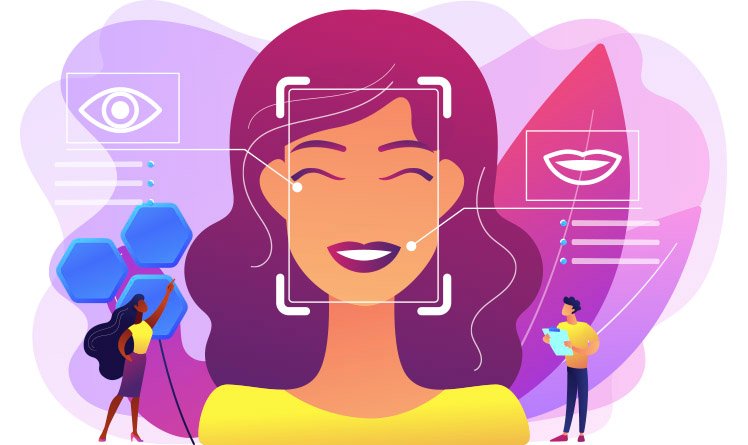What is FACS and EMFACS

|
Getting your Trinity Audio player ready...
|
If you are immersed in the universe of nonverbal communication, you’ve probably come across the term “FACS” in your research. This acronym, which stands for Facial Action Coding System, plays a crucial role in understanding facial expressions and decoding human emotions.
In this article, we will explore what FACS is and address the related concept, EMFACS, to provide a comprehensive overview of these systems and their relevance.
We will cover the following topics:
- What is FACS
- How FACS works
- What is EMFACS
- How EMFACS works
- Applications of FACS and EMFACS
- The future of facial expression coding
What is FACS
FACS, or Facial Action Coding System, is a coding system for facial facial microexpressions developed by Paul Ekman and Wallace Friesen in the 1970s. The system is composed of 44 action units (AUs), which are individual muscle movements that can be combined to form facial expressions.
FACS is a facial action coding system that describes the individual muscle units that contribute to a facial expression. The system consists of 44 AUs, which are organized into four categories:
- Primary muscles: are the muscles that produce basic facial expressions, such as joy, sadness, anger and fear.
- Secondary muscles: are the muscles that contribute to the most subtle facial expressions, such as contempt, surprise and disgust.
- Tertiary muscles: are the muscles that contribute to facial expressions that involve movement of the head and neck.
- Accessory muscles: are the muscles that contribute to facial expressions that involve the movement of the eyes and mouth.
AUs are coded according to their location, direction, duration, and strength. The location of the AU indicates which muscle is being activated. The direction of the AU indicates the movement of the muscle. The duration of the AU indicates how long the muscle is active. The strength of the AU indicates the intensity of the muscle movement.
How FACS works
To code a facial expression, a FACS encoder must identify the AUs that are present in the expression. The encoder then assigns a code to each AU, according to its location, direction, duration, and strength.
FACS can be used to analyze facial expressions in a variety of contexts, including psychology, medicine, criminology, and marketing, and is a key tool in research that seeks to understand the nuances of human expression. By applying FACS, professionals can break down facial movements into discrete units, allowing for more accurate and detailed analysis.
What is EMFACS
EMFACS, or Emotion FACS, is an extension of FACS that associates AUs with basic emotions. The system was developed by Ekman and his colleagues in the 1990s.
EMFACS identifies 12 AUs that are associated with basic emotions, including:
- Joy (AUs 6, 12, 17, 25)
- Anger (AUs 4, 7, 9, 10, 23, 26)
- Fear (AUs 1, 4, 5, 20)
- Sadness (AUs 1, 4, 15, 21, 24)
- Aversion (AUs 9, 10, 15, 21, 24)
- Contempt (AUs 9, 15, 17)
- Surprise (AUs 1, 2, 5, 20)
EMFACS can be used to identify the emotions a person is feeling based on their facial expressions.

How EMFACS works
EMFACS is based on the hypothesis that facial expressions of basic emotions are universal and has been supported by a wide range of research. Studies conducted in different cultures and with different population groups have shown that people express the same emotions with the same facial expressions.
For example, a study by Ekman and Friesen in 1971 showed that facial expressions of happiness, sadness, anger, and fear were recognized consistently by people across cultures.
Another study, conducted by Matsumoto and Ekman in 1988, showed that facial expressions of happiness, sadness, anger, fear, surprise, contempt, and disgust were recognized consistently by people across cultures.
Applications of FACS and EMFACS
FACS and EMFACS have a wide range of applications, including:
- Psychological research: EMFACS can be used to study facial expressions and their relationships to emotions, thinking, and behavior.
- Medicine: EMFACS can be used to diagnose conditions such as facial paralysis and Down syndrome.
- Criminology: EMFACS can be used to analyze facial expressions of suspects in crime cases.
- Marketing: EMFACS can be used to study consumers' facial expressions to understand their preferences.
The future of facial expression coding
Despite their effectiveness, FACS and EMFACS face challenges as technology advances. Ethical issues related to privacy and the need for constant updating to keep up with cultural changes are important considerations. However, these challenges also represent opportunities for continued evolution and improvement of these systems, ensuring that they remain relevant and ethical.
In short…
The Facial Action Coding System (FACS) and the Emotional Facial Action Coding System (EMFACS) are valuable tools for understanding facial expressions. FACS provides an accurate description of the individual muscle units that contribute to a facial expression. EMFACS associates these muscle units with basic emotions.
From unraveling the nuances of emotions to practical applications in a variety of fields, these systems provide a deeper understanding of nonverbal communication. As they face challenges and seek to evolve, the importance of FACS and EMFACS remains undeniable, shaping the way we interpret and connect through facial expressions.
Image: Freepik

Marcel Castilho is an expert in neuromarketing, neuroscience, mindfulness and positive psychology. In addition to being an advertiser, he also has a Master's degree in NLP – Neurolinguistic Programming. As the owner and founder of the communications agency VeroCom and also of the digital agency Vero Contents, he has been studying human behavior for over 30 years.


